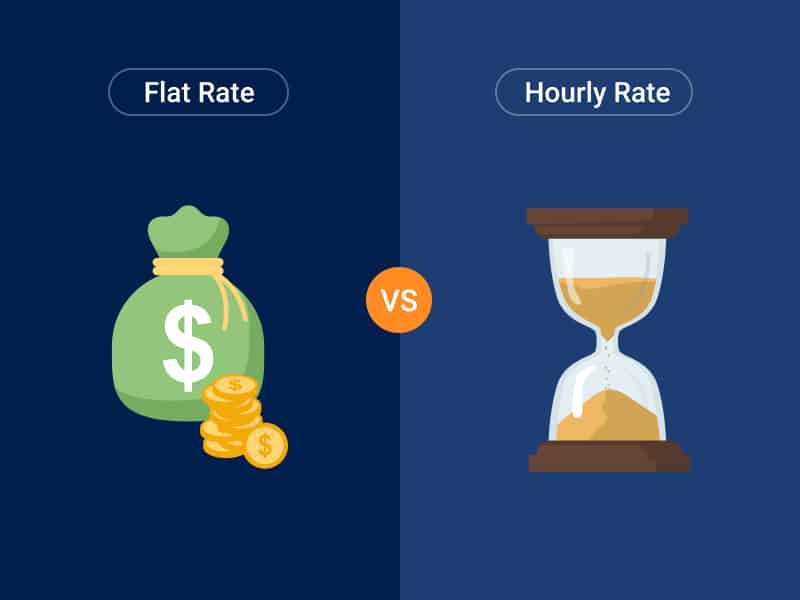Working and payment are fundamental aspects of our professional lives. As individuals, we engage in various forms of work to earn a living and contribute to society. Through our work, we apply our skills, knowledge, and efforts to fulfill specific tasks, meet organizational objectives, or provide valuable services. In return, we receive compensation or payment for our labor.
Work can take many forms, from traditional employment in companies and organizations to freelance or independent contracting arrangements. It can involve physical labor, intellectual pursuits, creative endeavors, or a combination. The nature of work varies across industries, professions, and individual preferences.

Conversely, payment refers to the remuneration or financial compensation for work performed. It is a vital aspect of the working relationship, reflecting the value attributed to individuals’ contributions. Payments can be in the form of salaries, wages, fees, commissions, or other agreed-upon compensation structures, depending on the type of work and the terms of the employment or contractual agreement.
So, in the world of freelance work, we need to understand the difference between a flat rate and an hourly rate.
What Does Flat Rate Mean?
“Flat rate” represents a fixed or unchanging charge for a particular product or service, regardless of the quantity or duration involved. Therefore, the cost remains unchanged irrespective of how much or how long you use it. Instead of being based on usage or time, a flat rate provides a standardized fee for a specific offering. This approach simplifies pricing and lets customers know how much they will be charged upfront without additional variables affecting the cost.
Initially popular with the automobile industry, authors, marketers, graphic artists, and lawyers now utilize the flat-rate method. With these experts joining your professional world, you will gain a greater familiarity and ease with the new system. However, as no payment method is perfect, even the flat rate system has merits and drawbacks.
- A flat rate is a fixed or unchanging charge for a product or service.
- This means the cost remains unchanged regardless of the quantity or duration involved.
- Flat rate pricing simplifies the billing process by providing a standardized fee.
- It allows customers to know the exact amount they will be charged upfront.
- Flat rates can be applied to various industries and services, such as car repairs, plumbing, or software subscriptions.
- With a flat rate, no additional variables affect the cost, providing transparency and predictability.
- It eliminates the need to calculate usage or time-based charges.
- A flat rate offers simplicity and convenience; customers don’t have to worry about fluctuating costs.
- It can benefit businesses as it streamlines pricing and ensures consistent revenue.
- However, not all products or services may be offered at a flat rate, depending on the nature and feasibility of standardizing the pricing.
Flat Rate Example in the Automobile Industry
A practical example of a flat fee in the automobile industry is a fee charged by a mechanic for a specific service or repair.
Suppose you take your car to a mechanic to replace the brake pads. Instead of charging you an hourly rate for the time it takes to complete the job or for individual parts and labor separately, the mechanic may offer a flat fee for the brake pad replacement. This means that regardless of the specific time taken or the cost of the parts, you will be charged a predetermined fixed amount for the service.
For example, the mechanic might charge a flat fee of $150 for a brake pad replacement. This fee would cover the cost of the brake pads, labor, and any other associated expenses. So, regardless of whether the mechanic takes one hour or three hours to complete the job or whether the brake pads cost $50 or $100, you would pay a flat fee of $150 for the brake pad replacement service.
The advantage of a flat fee in this scenario is that it provides transparency and predictability for the customer. They know the exact cost upfront and don’t worry about additional charges based on the time or parts involved. In addition, it simplifies the pricing process and allows customers to budget accordingly. For the mechanic, it streamlines the billing process and provides a standardized approach to pricing for specific services.
Depending on the complexity and variability of the work involved, some repairs or services may still be charged based on hourly rates or itemized billing.
Flat Salary Meaning
A “flat salary” refers to a fixed amount of money an employee receives from their employer as compensation for their work, regardless of the number of hours worked or the specific tasks accomplished. This amount is often annual but can also be expressed as a monthly or weekly figure.
Here are some essential aspects to understand about a flat salary:
- Fixed Compensation: The most significant characteristic of a flat salary is that it is fixed, i.e., it does not vary with the amount of time worked or the quantity or quality of work done (although the quality of work could affect raises or bonuses). This provides financial predictability for both the employee and the employer.
- Exempt Status: Employees paid a flat salary are often classified as “exempt” under U.S. labor laws, meaning they are exempt from overtime pay requirements. This is in contrast to “non-exempt” employees, who are typically paid an hourly wage and must receive overtime pay if they work more than 40 hours a week.
- Benefits and Drawbacks: A flat salary can provide financial stability for employees as they know exactly how much they will earn each pay period. On the downside, flat-salaried employees might end up working longer hours without receiving additional compensation for the extra work.
- Responsibilities and Expectations: People receiving a flat salary are generally expected to complete their assigned tasks and responsibilities regardless of how much time it takes. They often have more flexibility regarding their work schedule but are also expected to manage their time effectively to fulfill their job responsibilities.
Flate Rate Advantages
- Simplicity: Flat rates are simple to understand. Customers know exactly what they will be charged, making it easy to budget for the cost of the service.
- Predictability: Flat rates provide a degree of financial certainty and predictability for both the service provider and the customer, as the fee remains the same regardless of usage.
- No Usage Limit: Customers can use as much (or as little) of a service as they want under a flat rate system. This unlimited use can be a strong selling point for customers.
- Avoids Overages: Flat rate pricing eliminates the possibility of unexpected overage charges. Customers can use the service freely without worrying about incurring extra costs.
- Incentives: Since the cost doesn’t increase with usage, customers may be encouraged to use more of a service, believing they’re getting a better value for their money. This can lead to higher customer engagement.
- Ease of Transaction: A flat rate streamlines the transaction process because there’s no need to calculate variable rates or track usage.
- Unchanged by Time: The flat rate remains consistent, regardless of when the service is used. This can benefit customers who need to use the service during peak times when variable rates might be higher.
- Customer Trust: Flat rates can build customer trust by providing transparency in pricing. Customers appreciate knowing the total cost upfront without any hidden charges.
- Budgeting and Planning: Flat rate pricing can help businesses with revenue forecasting and financial planning, as the revenue from each customer is known and consistent.
- Competitive Advantage: Depending on the market and the product or service, offering a flat rate can differentiate a business from its competitors, potentially attracting more customers.
However, while a flat rate has many advantages, it might not always be the best pricing strategy depending on the
Flat Rate Drawbacks
Here are some potential drawbacks of flat-rate pricing:
- Fairness Concerns: Light and heavy users pay the same amount in a flat rate system. Some customers may feel this is unfair if they use the service sparingly but pay the same as someone who uses it extensively.
- Profitability Issues: For the service provider, if customers’ usage is consistently higher than the level at which the flat rate has been set, it can lead to losses, as the cost to provide the service exceeds the revenue received.
- Lack of Flexibility: A flat rate does not adjust according to usage, so customers who use the service less frequently might prefer a pay-as-you-go or usage-based pricing model.
- Overuse of Resources: Since there are no additional costs for high usage, customers may overuse or misuse the service, potentially straining the provider’s resources.
- Value Perception: If the flat rate is set high to cover costs, customers might perceive the service as expensive, especially if they don’t use it heavily.
- Competitive Pricing: A flat rate might not always be the best pricing strategy in a competitive market. Those options might attract customers if competitors offer more flexible, usage-based pricing.
- Limited Revenue Maximization: With a flat rate, service providers may miss out on the opportunity to charge more for premium or heavy usage.
- Waste: Flat rate pricing’s all-you-can-use nature can lead to waste, as customers have no financial incentive to conserve or use the service efficiently.
- Customer Retention: If customers feel they’re not using the service enough to justify the cost, they may be more likely to cancel, which can impact customer retention.
- Cost Recovery: If costs increase to provide the service, a flat rate might not cover these additional expenses, and changing the rate might upset customers.
Remember that the drawbacks of a flat rate system depend on the specifics of the industry, customer behavior, and a company’s costs and capabilities. Therefore, evaluating these factors is essential before deciding on a pricing model.
Flat Rate vs. Hourly Rate
Flat Rate Pricing
- Fixed Cost: A flat rate is a single fixed cost for a service or product, regardless of the time taken to deliver it.
- Simplicity: Flat rate pricing is straightforward, as customers know the total cost upfront.
- Predictability: Flat rates provide predictability for both the service provider and the customer, as the fee doesn’t change based on time or effort.
- No Time Tracking: Service providers don’t need to track their time meticulously, as the charge doesn’t depend on the time to complete the work.
- Customer Assurance: Customers can be assured that the cost won’t escalate due to unforeseen delays or complications.
- Potential for Higher Profit: Under a flat rate system, service providers can earn more if a task takes less time than anticipated.
- Risk of Underestimating Time: If a task takes longer than expected, the service provider might earn less per hour.
Hourly Rate Pricing
- Variable Cost: An hourly rate is a charge based on the time it takes to complete a task or deliver a service.
- Fairness: Hourly rates are often seen as fair, as customers pay precisely for the time the service provider puts into the job.
- Compensation for Extended Time: Service providers are compensated for additional time or effort due to unforeseen complexities.
- Time Tracking: Service providers must accurately track their time to ensure they’re paid for all their work.
- Uncertainty for Customers: The final cost might not be known upfront, which can cause customers to be uncertain about budgeting.
- Potential for Lower Profit: Service providers might earn less under an hourly rate system if a task is completed quickly.
- Risk of Overestimating Time: Customers might worry that service providers will artificially inflate the time to complete a task to charge more.
Flat rate and hourly rate pricing are two distinct models, each with strengths and contexts in which they are more suitable.
Flat rate pricing is often the better choice when the scope of work is well-defined and the time required to complete the task can be accurately estimated. In addition, this pricing model offers simplicity and predictability for the service provider and the client in such a scenario. For instance, a graphic designer might use flat rate pricing to charge for designing a logo because they have enough experience to predict how long the project will take accurately.
A significant advantage to the flat rate model is that it lets clients know how much they will be charged upfront, making it easier to budget for the expense. This can also benefit service providers as they don’t have to track their time as meticulously as they would with an hourly rate.
However, there’s a risk with flat rate pricing: if the project takes more time than anticipated, the service provider might effectively earn less per hour than they would under an hourly rate system. This is why service providers must have a solid understanding of the scope of work and their ability to complete it in the given time before deciding to charge a flat rate.
On the other hand, hourly rate pricing is typically used when the scope of the work isn’t clearly defined, the project might have unknown variables, or the customer prefers more flexible pricing. This model can benefit a complex or exploratory project, as it ensures that the service provider is compensated for all the time they invest in the project. For example, this could be a software developer working on a large, complex project with multiple stages and potential revisions.
Hourly rates are often seen as more fair, as the client pays directly for the time the service provider puts into the job. Additionally, if a task takes longer due to complications or changes in scope, the service provider isn’t penalized as they would be with a flat rate. However, the final cost with hourly rates can be unpredictable for the client, leading to uncertainty and potential budgeting challenges.
In conclusion, the choice between flat rate and hourly rate pricing depends on the specifics of the work. For example, a flat rate could be better if the project has a clear scope and the time required can be accurately estimated. However, an hourly rate might be more suitable for projects with an unclear scope, many unknowns, or a need for flexibility.





